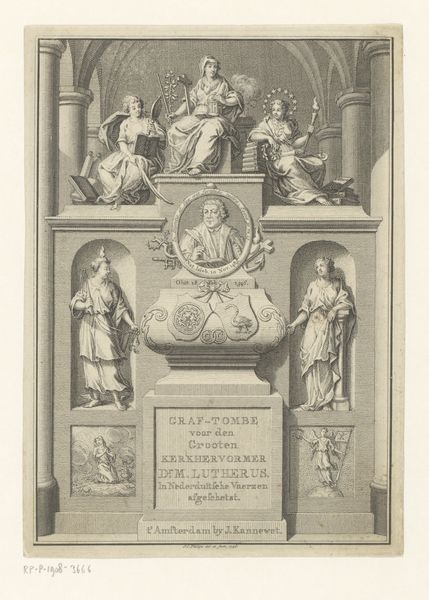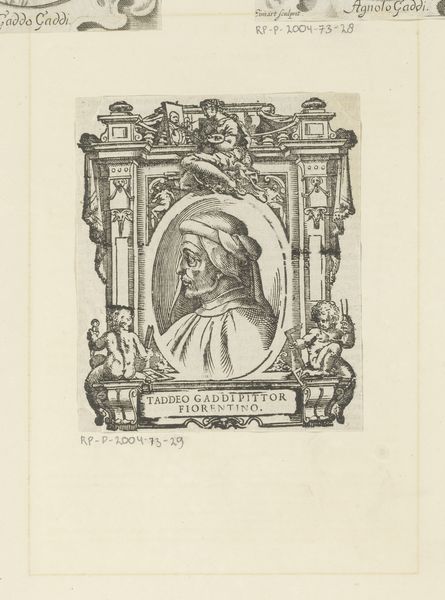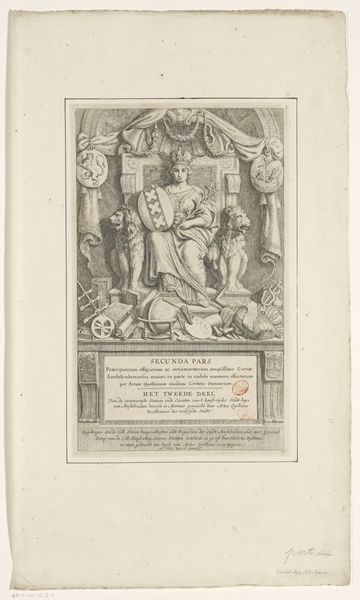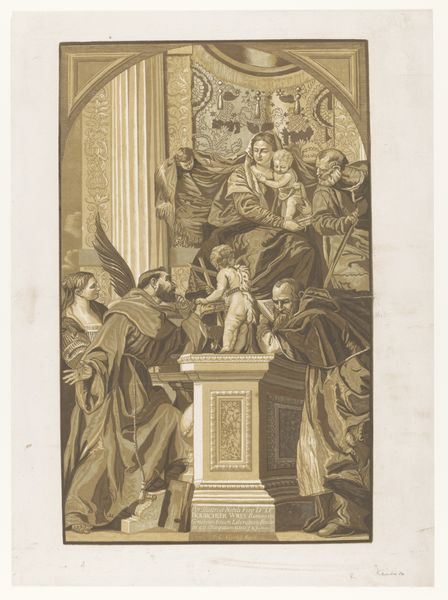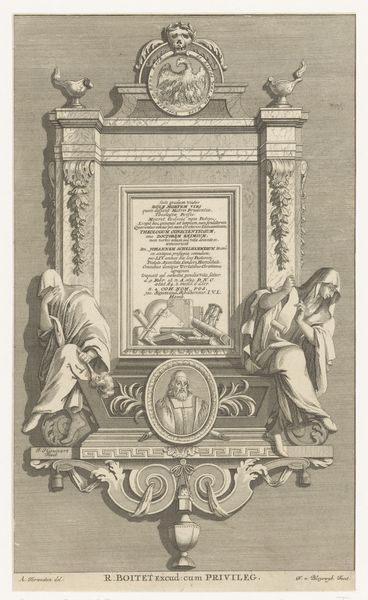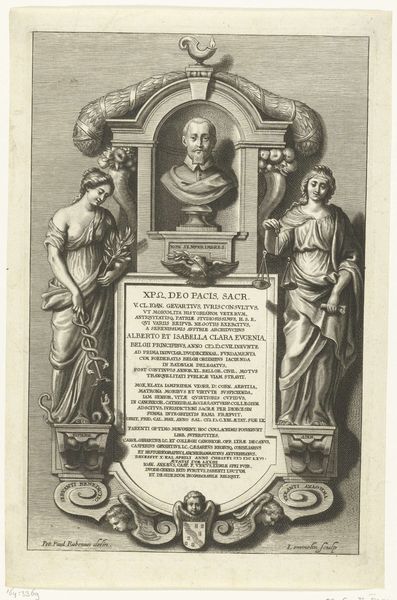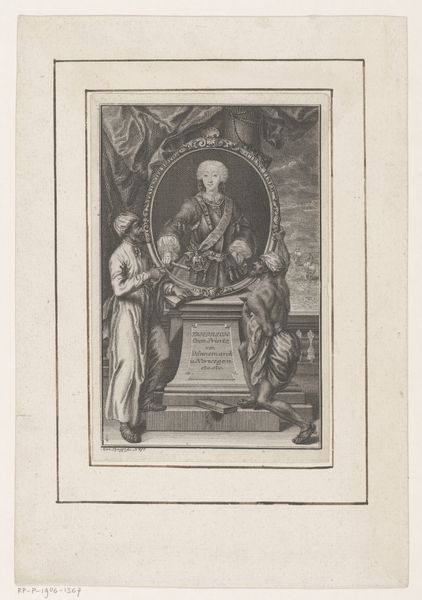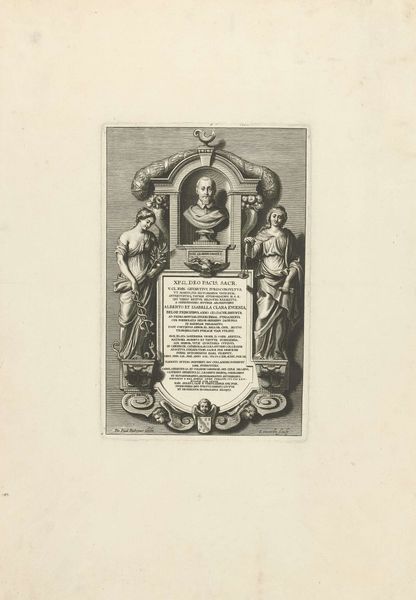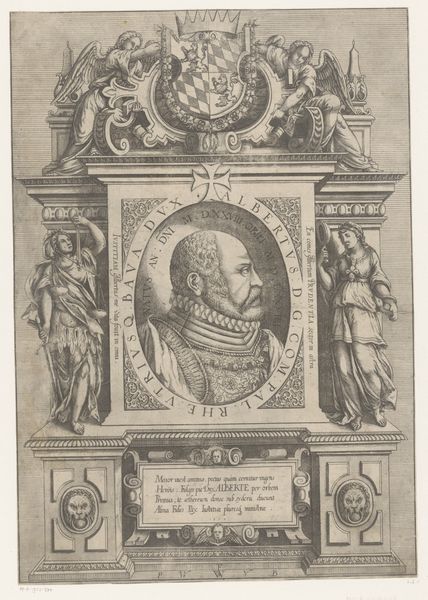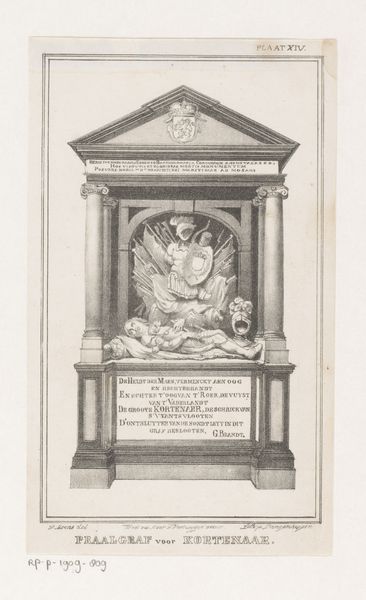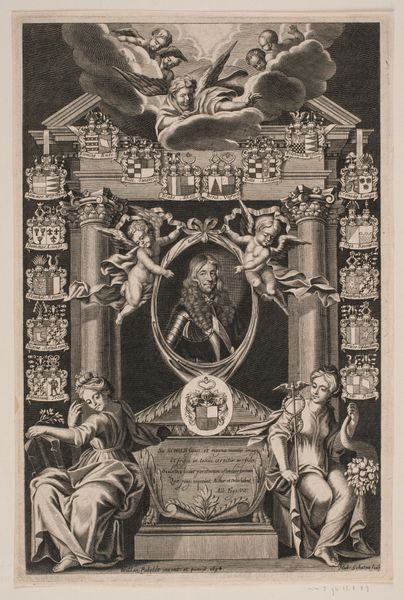
Monument met het portret Catharina de' Medici, omringd door de vier gratiën 1630
0:00
0:00
claudemellan
Rijksmuseum
print, engraving
#
portrait
#
allegory
#
baroque
# print
#
figuration
#
line
#
academic-art
#
engraving
Dimensions: height 207 mm, width 138 mm
Copyright: Rijks Museum: Open Domain
Curator: This engraving by Claude Mellan from around 1630, now residing in the Rijksmuseum, depicts a monument with a portrait of Catherine de' Medici, surrounded by the four graces. Editor: It has a curiously detached feeling, even though it is clearly intended as celebratory. It reminds me of something official, but almost ghostly because of its cool lines and pale color. Curator: It’s baroque, certainly, but with Mellan's signature precision. Engraving was such a powerful tool for disseminating imagery and ideologies at the time. Consider the use of classical figures: what cultural capital does Medici appropriate here? Editor: Power is definitely a motif that’s jumping out to me as well. These aren't just decorative figures, though; each grace carries potent symbols reflecting what women had to offer society. The mirror held by one might be about female vanity but perhaps represents introspection and the beauty ideal constructed around powerful women like Medici. It suggests a visual negotiation of feminine influence. Curator: Precisely. Note the positioning of the graces – framing Catherine within this structure almost deifies her. The allegory elevates the portrait beyond simple representation; it links her to enduring classical ideals. Think of the importance of the mirror in myth. Editor: It’s a complicated claim to legitimacy when you think about Medici’s own legacy. We could certainly examine Medici through her intersectional roles: her political authority, womanhood, and French-Italian identity during a time of much intersection conflict in the early-modern era. Curator: Indeed. And how would she intend that her political maneuvers are interpreted over time, when so closely associated with the aesthetic virtues embodied by the graces? The inclusion of Medici’s coat of arms underscores that association. Editor: What strikes me, still, is that while celebrating Catherine, the artwork also encapsulates a historical power dynamic where women's worth was often tied to carefully managed appearances. It prompts us to examine how women historically maneuvered for authority in restrictive systems. Curator: Mellan's engraving offers an intriguing lens through which to view the intersection of art, power, and gender in the Baroque period, wouldn’t you say? Editor: Absolutely. I think grappling with the context allows us to appreciate that in such historical depictions like these, celebration can sometimes mask a more conflicted reality for women in positions of power.
Comments
No comments
Be the first to comment and join the conversation on the ultimate creative platform.
